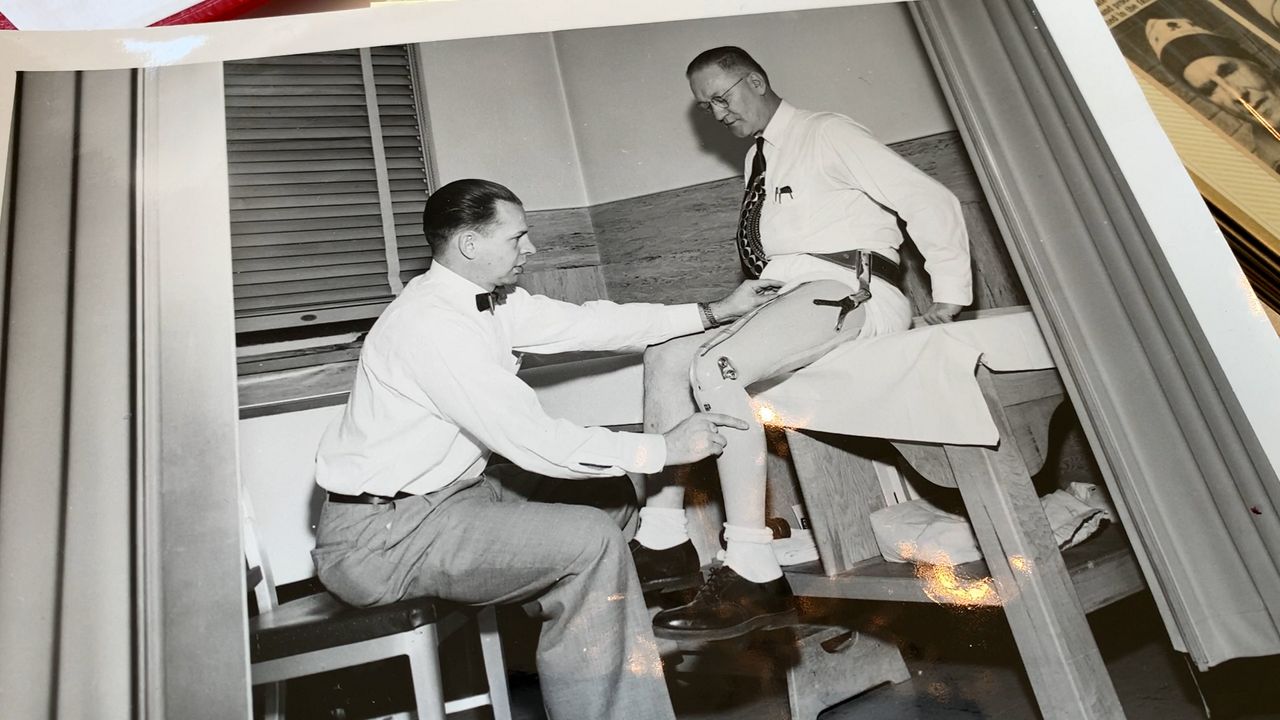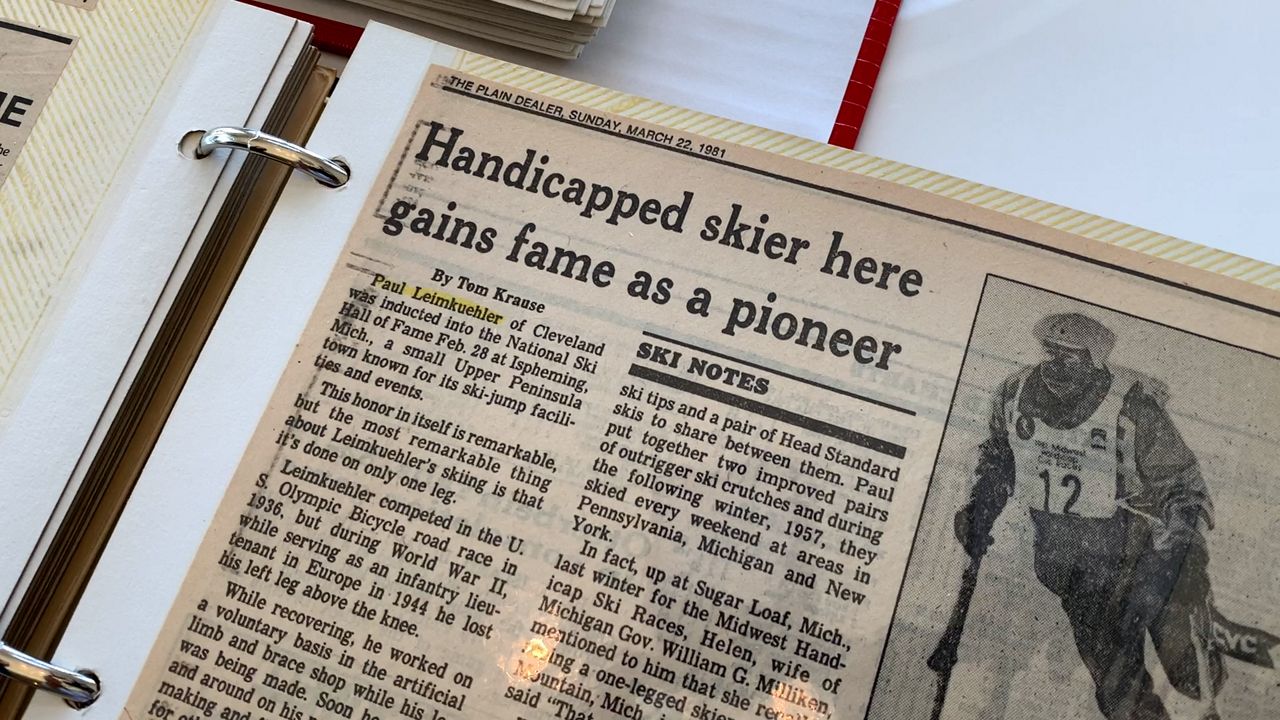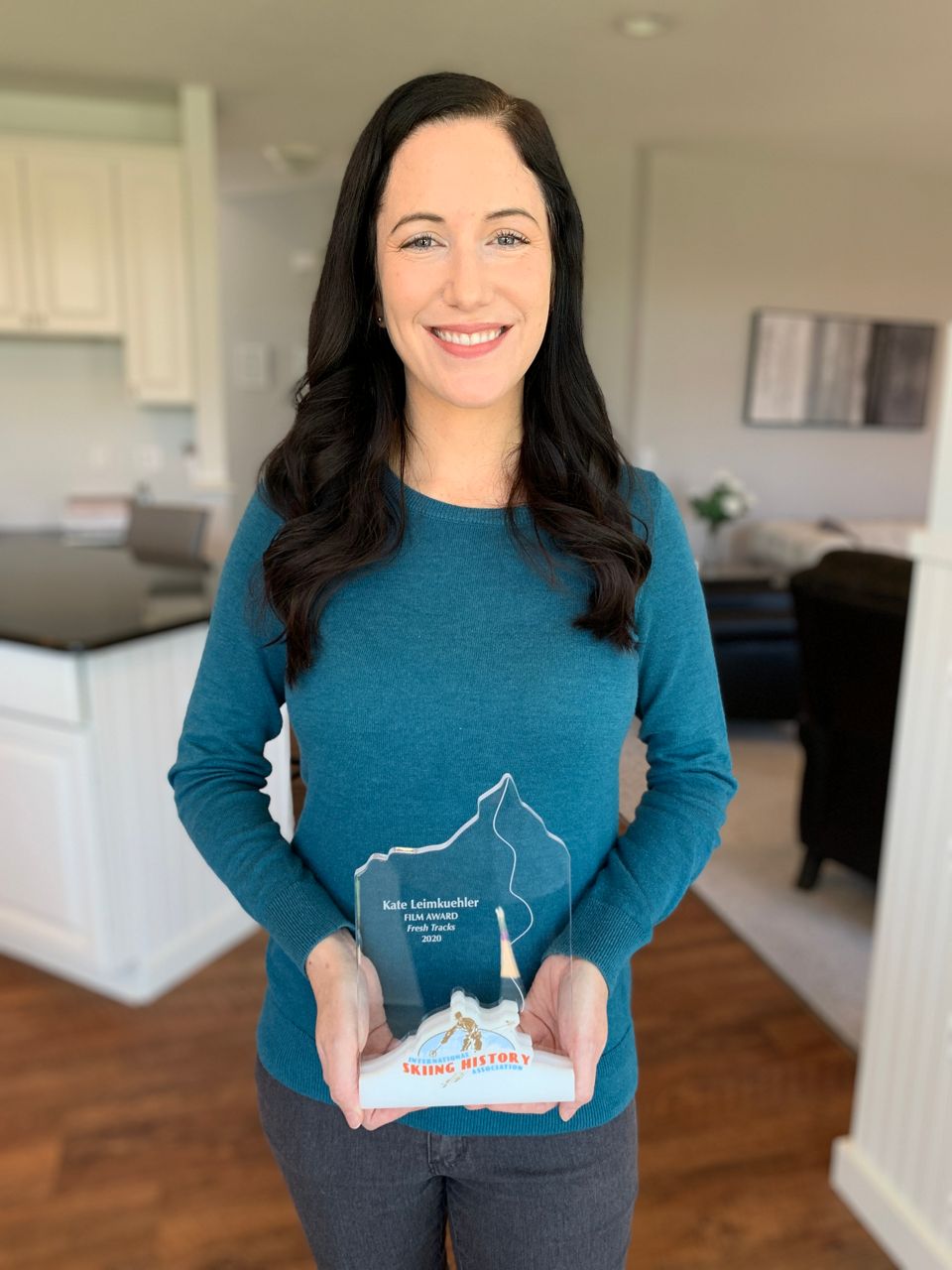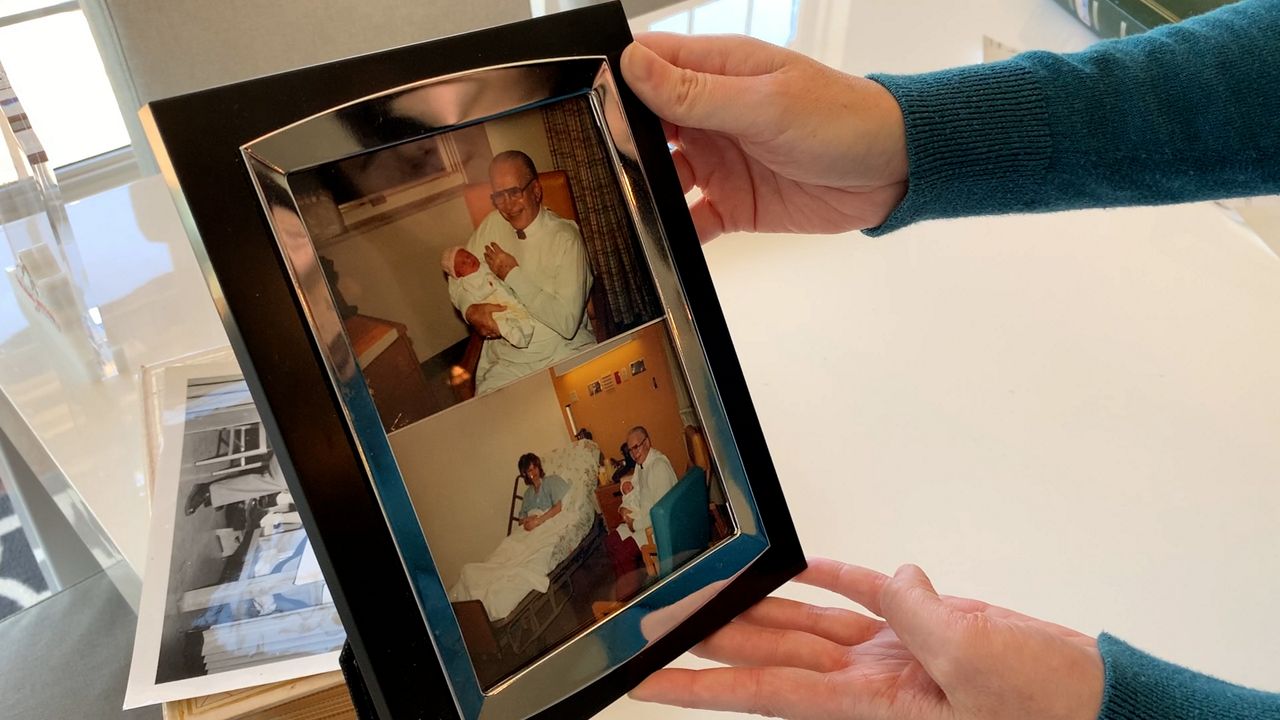CLEVELAND — Paul Leimkuehler is known as the “The Grandfather of Handicap Skiing" as well as the "Father of 3-Track Skiing."
He's a man who's made history in the adaptive skiing community in the U.S. thanks to an idea that has allowed millions of amputees to ski for generations to come. But that wasn't his planned life trajectory, so let's back it up.
Paul worked at Tinnerman Products as an engineer designing the nuts and bolts for airplanes before being drafted into WWII and losing his leg.

“In the Battle of Bulge, there was a piece of shrapnel that sliced open his leg. And so at that time we were waiting a couple of days to see if it would heal, but he knew it wouldn't heal. So he actually asked the surgeons to remove it. So I think that's really incredible that he was wise enough to know that there's no going back. There's only going forward,” said Katie Leimkuehler, Paul’s granddaughter.
That unfortunate accident changed his life. Surprisingly enough though it didn’t change his life for the worse, but instead for the better.
“He always said that he took advantage of his disadvantage. So his disadvantage was becoming an amputee and his advantage was turning it into two prosthetic businesses. And then the skiing device ‘outrigger’ that he designed,” said Katie.
Paul was a star athlete even before his amputation. He competed in the 1936 U.S. Olympic Cycling Trials as a teenager and was the 1938 Ohio State Cycling Champion. Once he lost his leg, his resilience led him to try every sport he could, hoping to find one that would let him do what a non-amputee person could.
It was on a visit to Seven Springs Ski Resort with his friends where he met an Australian ski instructor while sitting in the lodge who told him about the video “Miracle on Skis,” featuring European amputees skiing. Using his engineering skills, Paul quickly developed his own outriggers design from sawed-off crutches attached to shortened children's skis. Believe it or not, he had never skied when he had two legs.
“He didn't patent the outrigger design because he wanted other people to share in the joy that he found from it,” said Katie. “He’s an amazing skier. He's better than a lot of people with two legs and he's ripping it. So it's pretty impressive to see how great he was.”
Doors began to open for Paul that he never saw coming. He took the worst moment of his life and turned it into an opportunity. He opened his own prosthetics business, Leimkuehler Limb Co. It soon became his life’s mission to help other amputees enjoy life again and turn their own challenges into opportunities.

“His mindset set him apart from everybody else because he didn't care what people thought, especially at a time where handicapped parking probably didn't even exist. So he just found a way to work outside of limitations and see everything as an opportunity,” said Katie.
His prosthetic business has expanded to Leimkuehler Inc. and PEL Supply and many family members, including his children work in the business.
Paul was inducted into the National Disabled Ski Hall of Fame for his contributions to the skiing and adaptive athletics communities in 1996. He was also inducted into the U.S. Ski and Snowboard Hall of Fame in 1981 and the Ohio Veterans Hall of Fame.
He passed away when Katie was only 8-years-old. She heard about his life through the many stories her parents would share with her. His story inspires her every day and being that she is the CEO of Leimkuehler Media she teamed up with TFA Group to make a documentary about her grandfather’s life called “Fresh Tracks.” Through this documentary, she’s hoping to inspire the world.

“It's amazing to think I talked to all these athletes that benefited from my grandpa's design and that they're still skiing on it today, you know, 50 years later, and to see the impact that he's had on so many people,” said Katie. “Not everyone knows his story. So I'm here to tell it, and he's done such impactful work for the skiing and adaptive sports community. And I wanted to share his message with the world.”
It’s a story of a life’s tragedy turned triumph, that continues to open up a world of opportunities for adaptive athletes and amputees everywhere.
“Most people aren't really familiar with adaptive sports, unless you're already in that community. And there's so many more sports than just skiing. And so I really wanted to raise awareness of adaptive sports and adaptive skiing through this film. It's really important for people to know that they can still have a life after, you know, maybe losing a leg or becoming an amputee,” said Katie. “He turned his life around from a negative moment to something incredibly positive. That's the message of this film is that you can reimagine your challenges as opportunities. And there's always going to be obstacles in everyone's life regardless. And it's seeing the silver lining and being able to make positive moves in those moments.”
The documentary recently won the International Skiing History Film Award. It is available on Vimeo On Demand as well as Amazon Prime. For more information about the film you can visit its website.




